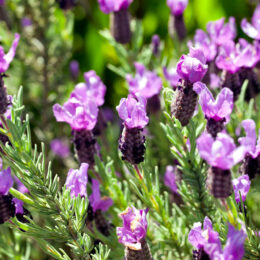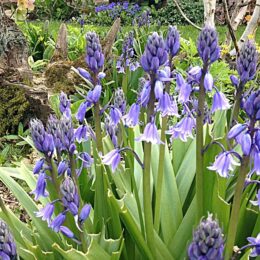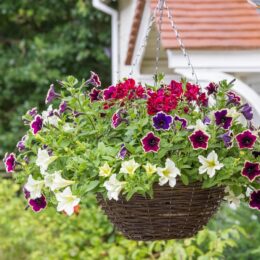Ornamental grasses are low maintenance, easy to grow and are a perfect for introducing architectural qualities to your garden to extend colour into autumn. Rather than the typical colours created by traditional flowering perennials and shrubs, grasses offer luminosity, shape and texture.
Add texture to beds and borders
Grasses can act as a glue in a border when its starts to feel empty of colour and past its best. Planting in blocks of 3 or ribbons will add cohesion and height and help your border feel more complete.
In a large enough border, weave together a selection of large and medium-sized grasses, such as Panicum, Miscanthus, Calamagrostis creating swathes of textures through your garden.
In smaller gardens or at the front of large border, try a mix of shorter grasses such as Stipa, Carex, Festuca or Ophiopogon.

Sedum, Melianthus and Astelia surrounded by a variety of grasses
Soften hardscaping
As grasses are never static they can create a wonderful feeling of motion in a garden perfect for softening the look of a wall, fence or paving.
Their graceful movement catches the low autumn light in their foliage and seed heads adding a beautiful radiance to the garden as they stir with the slightest breeze.

Patio border containing Verbena bonariensis, Sedum, Calamagrostis x acutiflora ‘Karl Foerster’ and Pennisetum alopecuroides
Top Tip: Grasses tolerate a wide range of conditions and will survive long periods with no water.
Perfect for containers
You can use grasses to provide interesting foliage alongside seasonal bedding plants. They add height, texture and structure to autumn containers.

Photo by GAP Photography

Photo by GAP Photography
Care
Like certain perennials, some deciduous grasses can lose their summer colours but still retain their stature and seed heads, creating interest at a time of year when there is little else on display. Instead they can be left to die down naturally and cut back in early spring when new foliage starts to grow. You might even look forward to frosts with ornamental grasses in your garden. The sight of glistening seed heads on a cold frosty morning is truly a sight to behold.








